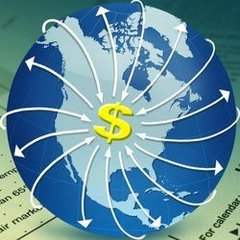Most people see tax evasion as a never-ending problem for governments – but how pervasive is it? Professor Michelle Hanlon from MIT and team have, for the first time, put a cost on “round-tripping,” a particular kind of tax evasion that the US government has been trying to stamp out.
Tax evasion is the use of illegal methods not to pay tax.
The study, titled “Taking the Long Way Home: U.S. Tax Evasion and Offshore Investments in U.S. Equity and Debt Markets,” has been published in the Journal of Finance. It was also co-authored by Jacob R. Thornock of the University of Washington, and Edward L. Maydew of the University of North Carolina.
In round-tripping, American investors move money to offshore tax havens and then invest in American stocks and debt markets with their “foreign” funds. In other words, American investors are masquerading as investors from overseas, and are thus not liable to the same tax rates on interest income and capital gains. It is called round tripping because the money makes a “round trip” from the US, abroad, and then back.
Tax hikes encourage tax evasion
The authors report that there is a 2.1% to 2.8% increase in FPI (foreign portfolio investment) from tax havens for every 1% rise in the top US tax rate.

Since 2008, between about $34 billion and $109 billion of FPI from offshore tax havens are invested in the United States through round-tripping, resulting in a loss for the IRS of $8 billion to $27 billion.
Professor Hanlon said:
“The higher the tax rate, the more securities appear to be purchased from tax haven jurisdictions. This seems to indicate that U.S. individuals are pretending to be foreigners who then invest in the U.S. markets.”
The authors have presented their findings to the US Senate’s Permanent Subcommittee on Investigations, as well as other regulatory agencies.
How to track down tax evasion
The researchers used a multi-prong strategy to track down the tax evaders, because many investments from tax havens are legitimate. They first set out to determine what investment level changes there were from tax havens after US tax rates were altered. Then they evaluated these investment changes and focused on whether the United States had a bilateral TIEA (Tax Information Exchange Agreement) with the offshore tax haven in question.
US authorities are able to gather much more information about investments made from places with which they have TIEAs.
The study revealed that when the US creates a TIEA with another sovereign party, there is a drop of up to 32% in both debt and equity investments.
Howard W. Johnson, a Professor of Accounting at the MIT Sloan School of Management, said:
“The reverse effect we see is that when the U.S. enters into an exchange agreement, we see less investment from tax havens.”
Hanlon said:
“It’s very hard to identify tax evasion, because obviously people are trying to hide it. (However), once we started seeing the data, we realized we could try to tackle this problem. We had to do a lot of tests to try to isolate the effect we’re looking for, [and] we think it’s a big step to try to put some numbers around this phenomenon.”
The researchers gathered and analyzed data from the US Treasury and the US Federal Reserve regarding monthly flows of foreign investment into US markets.
How to deal with this type of tax evasion
The authors believe that round-tripping would become much more difficult and risker if there were greater international cooperation. The more TIEAs there were, for example, the longer the round-tripping processes would have to become.
Hanlon suggests:
“People always try to evade taxes, but [more TIEAs] will make it harder. And the more costly and risky it becomes, the costs will outweigh the benefits, at least on the margin, and the less likely people are to do it.”
“We felt it was important enough that someone try to do research like this, to get people thinking about other data sources and other ways to examine [tax evasion],” Hanlon says. “Our hope was that it would lead to more research and that people would take more risks to look at things like this.”
